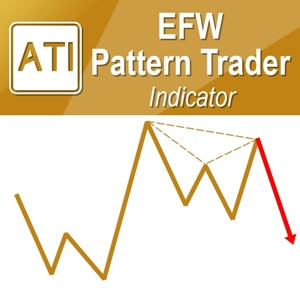Glossary of Terms for Forex
When you study Forex and Stock market, this glossary of terms can be helpful.
M1: One minute timeframe in chart
M5: Five minute timeframe in chart
M15: Fifteen minute timeframe in chart
M30: Thirty minute timeframe in chart
H1: One hourly timeframe in chart
H4: Four hourly timeframe in chart
D1: One day timeframe in chart
W1: One week timeframe in chart
MN1: One month timeframe in chart
Artificial Intelligence: Any intelligence demonstrated by machines, in contrast to the natural intelligence displayed by humans and other animals.
Arbitrage: A risk-free trading where the same instrument is bought (=long) and sold (=short) simultaneously in two different markets in order to cash in on the difference in these markets.
Aggregated Risk: Total amount of exposure or risk which a bank has with a customer for both spot and forward contracts.
Ask: The price at which the currency or instrument is offered.
Bank Notes: Paper issued by the central bank, redeemable as money and considered to be full legal tender. A banknote is known as a “bill” or a “note.”
Bear Market: A market in which stock prices are falling.
Bearish: Believing that a particular security, sector, or the overall market is about to fall. Opposite of bullish. “Bear” is a trader who believes the market will fall.
Bitcoin: The first global, decentralized currency.
Bid-Offer Spread: The difference between the buy (bid) and sell (offer) price of a currency or financial instrument.
Bollinger Bands: A technical indicator which combines a moving average with the volatility. The bands were designed to identify whether the prices are high or low on relative basis. In general, they are plotted two standard deviations above and below a simple moving average. The bands look like an expanding and contracting envelope model.
Bull Market: A market in which stock prices are rising.
Bullish: Bullish refers to having a positive outlook on a particular security or an investment. A situation where groups of financial securities are rising.
Candlestick: A candlestick is a type of price chart used in technical analysis that displays the high, low, open, and closing prices of a security for a specific period like 1 hour, 1 day, 1 week and so on.
Commodities: Products used for commerce that are traded on a separate, authorized commodities exchange. Commodities include agricultural products and natural resources such as timber, oil and metals. Commodities are the basis for futures contracts traded on these exchanges.
Crude oil: One of the commodities traded in Forex market, with the two most popularly traded grades of oil being Brent Crude and West Texas Intermediate (WTI). Crude oil prices reflect the market’s volatile and liquid nature, as well as oil being a benchmark for global economic activity.
Default: In finance, default is failure to meet the legal obligations (or conditions) of a loan. In option, the latest day or time by which the buyer of an option must indicate to the seller his intention to the option.
Delivery Date: The date of maturity of the contract, when the exchange of the currencies is made. This date is more commonly known as the value date in the FX or Money markets.
Dow Jones Industrial Average: The Dow Jones Industrial Average (DJIA), also known as the Dow 30, is a stock market index that tracks 30 large, publicly-owned blue-chip companies trading on the New York Stock Exchange (NYSE) and the Nasdaq. The Dow Jones is named after Charles Dow, who created the index in 1896 along with his business partner Edward Jones.
Elliot Wave Principle: A technical analysis which makes use of empirically derived rules for interpreting action in the Forex and Stock markets. Elliott Wave Theory refers to a five-wave/three-wave pattern which forms one complete bull market /bear market cycle of eight waves.
Equities: Common and preferred stocks, which represent a share in the ownership of a company.
Ethereum: A public blockchain network and decentralized software platform upon which developers build and run applications. As it is a proper noun, it should always be capitalized.
EURUSD or EUR/USD: EURUSD is the rate that euros can be exchanged for US dollars. If the rate is 1.50, it means it takes 1.5 US dollars to buy 1 Euro.
European Monetary System: A monetary system designed to stabilise if not eliminate exchange risk between member states of the EMS as part of the economic convergence policy of the EU. It permits currencies to move in a measured fashion (divergence indicator) within agreed bands (the parity grid) with respect to the ECU and consequently with each other. Italy and the UK are currently not part of the system. Only Germany and the Benelux are within the current narrow band.
Expiry Date: The last day on which the holder of an option can exercise his right to buy or sell the underlying security.
Exposure: The total amount of money loaned to a borrower or country in the case of banking economy or in Forex trading, it is the risk that you could lose money due to the exchange rate evolving in a way that is unfavourable to you.
Banks set rules to prevent overexposure to any single borrower. In trading operations, it is the potential for running a profit or loss from fluctuations in market prices.
Fractal: In math, a fractal is an infinite pattern that appears similar no matter how closely you look at it. This is also called self-similarity. In layman’s terms, fractal is any curve or geometric shape for which any suitably chosen part is similar in shape to a given larger or smaller part when magnified or reduced to the same size.
Fractal Wave: Fractal or self-similar geometric structure observed in the wave form. Fractal wave is typically observed in the financial market including stock market, forex market and commodity market.
Fractal Triangle: It is the endlessly repeating triangle that represents the market cycles in Forex and Stock market. A Fractal triangle typically consists of one swing high and one swing low.
GBPUSD or GBP/USD: GBPUSD is the rate that British pounds can be exchanged for US dollars. If the rate is 1.20, it means it takes 1.2 US dollars to buy 1 British pounds.
GoldUSD or Gold/USD or XAUUSD: XAUUSD is the rate that an ounce of gold can be exchanged for US dollars. If the rate is 1200, it means it takes 1200 US dollars to buy an ounce of gold.
Rally: A brisk rise in the general price level of the market or price of a stock.
Range: The difference between the highest and lowest price of an asset during a given trading session.
Securities: Transferable certificates of ownership of investment products such as notes, bonds, stocks, futures contracts and options.
Spread: The difference between the bid and the ask prices of a stock.
S&P 500 Index: S&P 500 index is the Standard & Poor’s 500 Composite Stock Price Index, a widely recognized, unmanaged index of common stock prices. You may not invest directly in the S&P 500 Index, and, unlike the Fund, benchmark indices do not incur fees or expenses.
Swing high: Swing high refers to the rising price action from trough toward a peak.
Swing low: Swing low refers to the falling price action from a peak toward a trough.
About this Article
This article is the part taken from the draft version of the Book: Technical Analysis in Forex and Stock Market (Supply Demand Analysis and Support Resistance). Full version of the book can be found from the link below:
https://algotrading-investment.com/portfolio-item/technical-analysis-in-forex-and-stock-market/
You can also use Ace Supply Demand Zone Indicator in MetaTrader to accomplish your technical analysis. Ace Supply Demand Zone indicator is non repainting and non lagging supply demand zone indicator with a lot of powerful features built on.
https://www.mql5.com/en/market/product/40076
https://www.mql5.com/en/market/product/40075
https://algotrading-investment.com/portfolio-item/ace-supply-demand-zone/
Below is the landing page for Optimum Chart (Standalone Charting and Analytical Platform).
https://algotrading-investment.com/2019/07/23/optimum-chart/
Related Products




